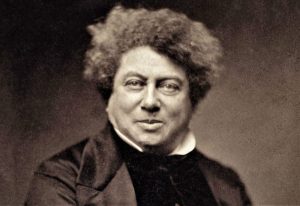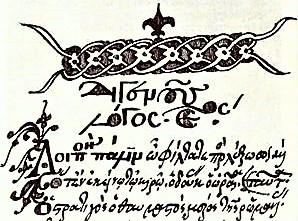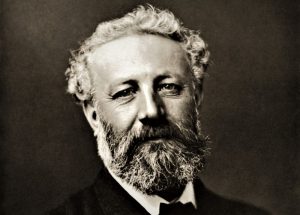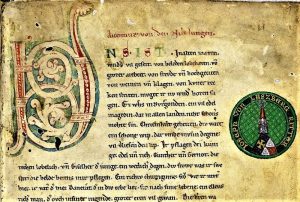Alexandre Dumas
Alexandre Dumas was an excellent French playwright and novelist who was able to move readers from all over the world with his works and who occupies in universal literature, a very representative position in the romanticism literary movement. His works are still being read and studied in numerous schools.

Personal information
- Birth: 24/07/1802
- Death: 05/12/1870
- Nationality: French
Who was Alexandre Dumas?
Alexandre Dumas is a French novelist and playwright known worldwide for his literary works counting more than 1200. His literary style is romanticism because it breaks neoclassicism rational rules and focuses on sentimental expression, love, patriotic sense and French Revolution, Liberty, Equality and Fraternity currencies. Alexandre Dumas is one of the most popular and prolific writers in France, and among his best known works can be mentioned: The three musketeers, The Count of Montecristo and Queen Margot. However, his writings span many genres, from short stories and novels to plays and cooking dictionaries.
The Three Musketeers (1844), The Count of Montecristo (1845), Queen Margot (1845), The Black Tulip (1850) or The Hand of the Dead (1859), are some of the best known works of this writer. They combine adventure, history and fantasy in a majestic way. Many of these works have already been translated into more than 100 languages and taken to the theatre and cinema for young and old delight.
As a curious fact, his son bears the same name: Alexandre Dumas. That’s why they usually make a difference by placing father or son after the name.
Biography
Alexander Dumas was born in Villers- Cotterests, France, on July 24, 1802. His father was Thomas-Alexander Dumas a French Revolution general who served Napoleon Bonaparte, known as the Black Count because he was born in Haiti; his mother was Marie-Louise Elisabeth Labouret.
When Alexandre Dumas’ father died when he was four years old, the writer was placed under the care of his mother, who received a widow’s pension that was barely enough to live on.
As a child, Alexandre Dumas had to work as a messenger, tobacco salesman and notary’s clerk.
In 1822, he traveled for the first time to Paris and was so impressed by the theatre and the city that the following year, he returned to settle. He got a job as a scribe for the Duke of Orleans thanks to the recommendations he had obtained from his father’s friends.
Three years later, in 1825, Dumas wrote his first vaudeville, entitled Hunting and Love. The following year he wrote his first novel in Beaulieu’s White prose.
In 1830, his play Henry III and his court, gained great admiration among the public, and the following year, his play Antony, achieved success and popularity, with which -according to literary specialists- romance began in French theater.
Alexandre Dumas had many loves and made numerous trips to different countries. In 1824, was born his first son with Marie-Catherine Lebay, a dressmaker with whom he had an affair. This son was called Alexander Dumas and also devoted himself to writing. In 1831, he had his first daughter, Marie-Alexandrine with the actress Belle Krebsamer. The following year, in 1832, he traveled to Switzerland and three years later to Italy before moving on to Belgium and Germany. During these trips abroad, he began to write his travel diaries.
In 1840, he married the actress Ida Ferrer with whom he has a stormy relationship for several years.
For many of his works, Alexandre Dumas had assistance from a number of collaborators, including Auguste Maguet, who participated with the creation and historical research of many of his novels.
On the other hand, Alexander Dumas collected a large sum of money that allowed him to build a castle in Le Port-Marly called Mount Christ. However, he always lived full of unpaid debts.
In 1858, he made a trip to St. Petersburg, Moscow, Astrakhan, Baku, Georgia and the Black Sea coasts that allowed him to write several books on Russia as well as translations of Russian authors of that time.
In 1859, he travelled to Italy and helped General Giuseppe Garibaldi by buying arms in Marseille. After Garibaldi’s victory in Naples, the general designated Dumas as head of the Excavations and Naples Museums, where he stayed until 1864. In Naples, his daughter Micaela was born, from his romance with Emilia Cordier.
In 1870, Alexander Dumas visited his son in Puys and on December 5 of that year, he died of a heart attack.
Alexander Dumas wrote more than 1,200 works, making him one of France’s most popular and prolific writers.
Alexandre Dumas style
The works of Alexander Dumas are framed in the literary movement known as Romanticism. This is an anti-classical movement that broke with rational rules of classicism and opened the way to the exalted emotion of its characters, to the currencies of the French Revolution “Liberty, Equality and Fraternity” and to great causes such as patriotism, justice and love.
Acknowledgements
In life, Alexandre Dumas had several recognitions for his written production but the most mentioned are:
- In 1873, he received in France the Knight’s decoration of the Royal Order of the Legion of Honor.
- In 1846, he is decorated in Italy, as first class Knight of the Order of Merit under the title of Saint Louis of the Duchy of Lucca.
- In 1847, he is recognized in Spain, as Commander of the Royal and American Order of Isabel the Catholic in the year 1847.
- In 1883, a monument in his name was inaugurated in Malesherbes Square in Paris, where he appears with one of his best-known characters, the musketeer D’Artagnan.
- In 2002, the president of France Jacques Chirac ordered that Alexander Dumas body to be transferred to Paris Pantheon.
Alexandre Dumas’ outstanding works
In Alexandre Dumas production there are different types of genres. Among them, we can mention short and long novels, historical and horror novels, novels related to countries and historical characters, autobiographies, plays, stories for children and young people, press articles, among others.
Short novels can be mentioned: Cherubino and Celestina (1835), The Cabriolé Driver (1835), A Masked Ball (1835), Bernardo (1835), Pascual Bruno (1838), A Journey to the Moon (1860) and Desire and Possession (1861), among others.
Novels and children’s stories can be mentioned: Captain Pánfilo (1839), Lyderic´s Adventures (1842), Countess Berta Mush (1845), Pierrot Youth (1854), King of Moles and his daughter (1858), The Two Brothers (1858), The Charmed Whistle (1859), The Bolos King (1860), among others.
Adventure novels can be mentioned: Cecilia of Marsilly (1844), The Brothers Corsicans (1844), The Three Musketeers, Trilogy D’Artagnan I, (1844), The Count of Montecristo (1845), Twenty years later, Trilogy D’Artagnan 2, (1845), Queen Margot, series Wars of Religion 1, (1845). The viscount of Bragelonne, Trilogy D’Artagnan 3, (1848), The black tulip (1850), among others.
From travel novels we can mention: Travel impressions: In Switzerland (1833), Fifteen days in Sinai (1839), Travel impressions: South of France (1841), On the banks of the Rhine (1841), A year in Florence (1841), From Paris to Cadiz (1847), The Veloce (1848), Travel impressions: The Caucasus (1859), Travel impressions: In Russia (1860), among others.
Among the horror novels we can mention: Fontenay of Roses (1849), The Woman with the Velvet Necklace (1851), The Testament of M. de Chauvelin (1850), My Grandfather’s Hare (1855), A Meal at Rossini’s House (1849), The Marriages of Uncle Olifo (1849), among others.
Historical novels include Blanca de Beaulieu (1826), Gallia and France (1833), Isabella of Bavaria (1835), The Countess of Salisbury (1839), among others.
Among the novels on Italy and Russia can be cited: Memories of Garibaldi (1860), The Garibaldi (1861), The Snowball (1853), Sultaneta (1859), Princess Flora (1859), Mariana (1859), The Ice Palace (1860), among others.
His biographical and autobiographical novels include Napoleon (1840), Joan of Arc (1842), The Medicis (1845), The Last King of the French (1852), Adventures of a Comedian (1854), Julius Caesar (1855), My Memories (1852-55), Stories of My Animals (1868), among others.
In theater, he wrote plays such as: Henry III and his court (1829), Cristina (1830), Antony (1831), Kean or Disorder and Genius (1836) and many more.
Alexandre Dumas phrases
Of Alexandre Dumas’ most famous phrases, the following stand out:
- “The pride of those who cannot build is to destroy.”
- “Life is so uncertain, that happiness must be taken advantage of at the moment it arises.”
- “Life is fascinating: you only have to look at it through the right glasses.”
- “When unbridled love enters the heart, it gnaws all other feelings; it lives at the expense of honor, faith and the word given.”
- “For all sorts of evils there are two remedies; time and silence.”
- “If you give the impression that you need anything, you will not be given anything; in order to make a fortune, you must appear to be rich.
- “Opinions are like nails: the more one hits them, the more they penetrate.”
- “Love is physical, marriage is chemical.”
- “Human wisdom is completely enclosed in these two words: Trust and wait!”
- ” It is not necessary to know the danger to be afraid; in fact, the unknown dangers are the ones that inspire the most fear. “
How to cite this article?
Briceño V., Gabriela. (2019). Alexandre Dumas. Recovered on 24 February, 2024, de Euston96: https://www.euston96.com/en/alexandre-dumas/









